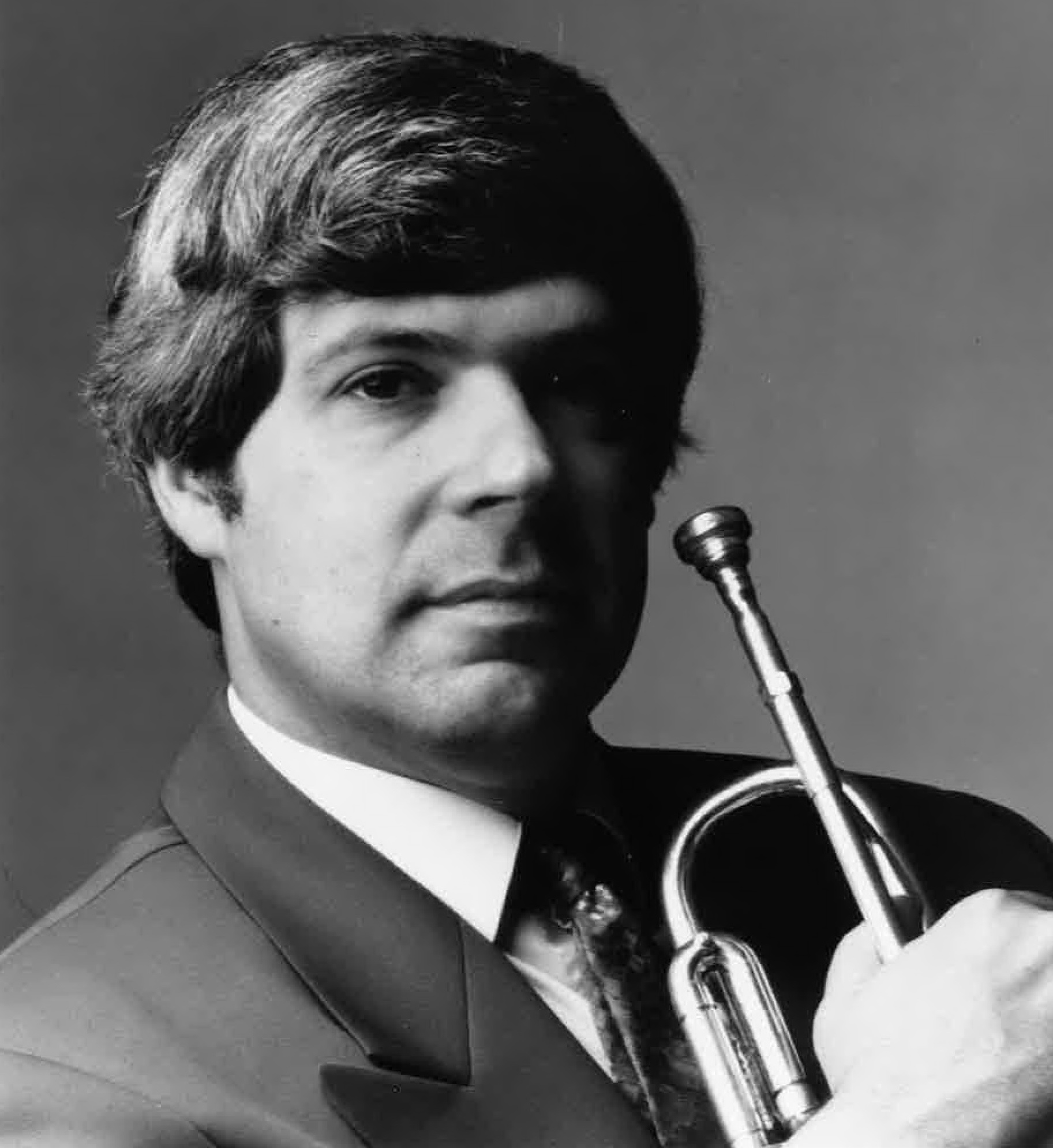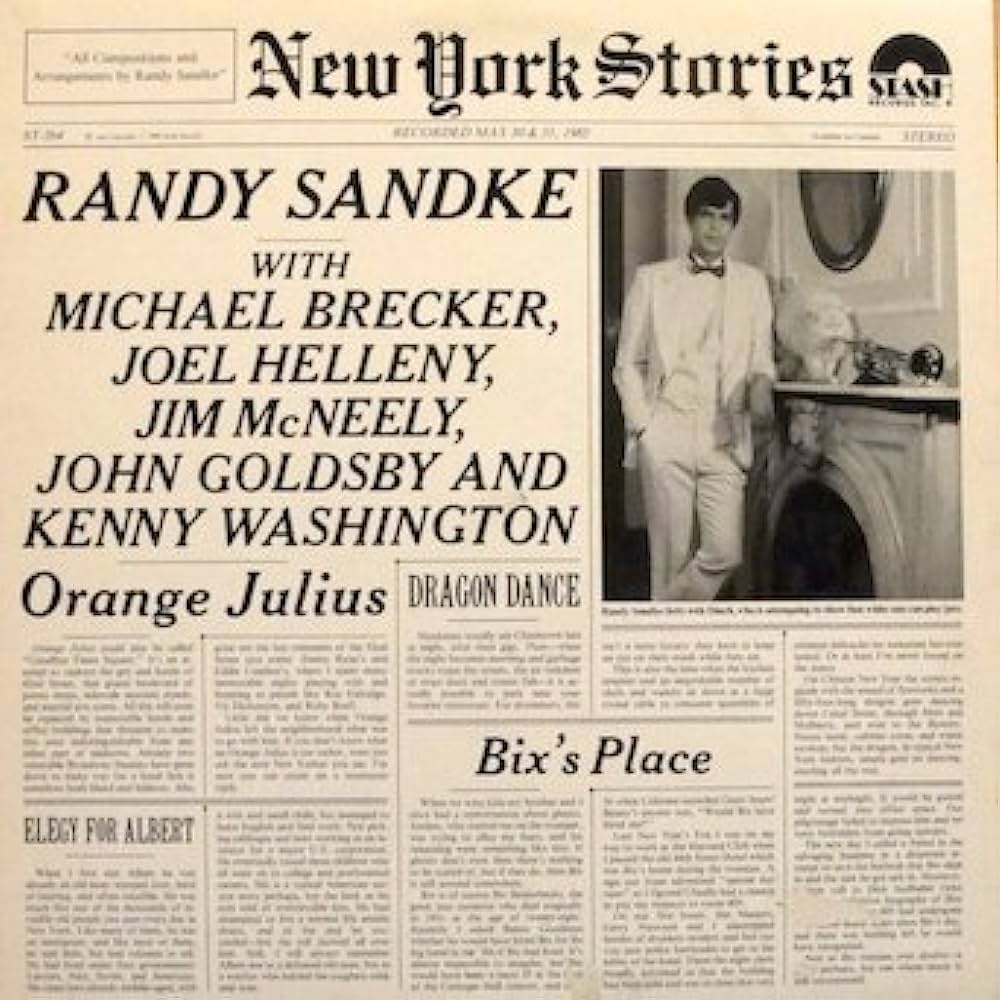Elegy For Albert – Randy Sandke
A stately ballad that begins in a minor key but ends in the relative major.
- Recording: Randy Sandke - New York Stories
- Recorded on: May 30-31, 1985
- Label: Stash (ST 264)
- Concert Key: A-flat
- Vocal Range: , to
- Style: Ballad
- Trumpet, Guitar - Randy Sandke
- Violin - Lamar Alsop, Lewis Eley, Jean Eley
- Piano - Jim McNeely
- Bass - John Goldsby
- Drums - Kenny Washington
Video
- Description
- Historical Notes
- Solos
- Piano Corner
- Bass Corner
- Drum Corner
- Guitar Corner
- Inside & Beyond
- Minus You
Stirring, stately, and poetic, this ballad is certainly an elegy. It has a classic minor-key jazz ballad sound and seems to establish an F minor tonality, but at the end of the second A section the changes resolve to A♭ major. The form is slightly irregular, with two eight-measure A sections followed by a six-measure bridge. The C section is like A, but with the first ending (last two measures) followed directly by the second ending with one more measure added at the end, 11 measures total.
The melody and changes are mostly tonal in F minor/A♭ major, but with a few colorful alterations and passing chords. The resolution to A♭ major at the end of the second A and C is preceded with an unexpected Amaj7. The bridge changes are almost all slash chords, with triads mostly a tritone from the root (such as Emaj7/B♭); it's not quite a pedal point as the bass notes change every two measures, but there are pedal-esque repetitive rhythm section figures.
There's a two-measure rhythm section intro that sets up the first two chords (F minor to G♭ major). The coda ritards to a melody break in the second to last measure of the form, with an eighth-note line into the last chord. This line has a clever melodic shape, nearly symmetrical with its retrograde inversion.
The melody and changes are mostly tonal in F minor/A♭ major, but with a few colorful alterations and passing chords. The resolution to A♭ major at the end of the second A and C is preceded with an unexpected Amaj7. The bridge changes are almost all slash chords, with triads mostly a tritone from the root (such as Emaj7/B♭); it's not quite a pedal point as the bass notes change every two measures, but there are pedal-esque repetitive rhythm section figures.
There's a two-measure rhythm section intro that sets up the first two chords (F minor to G♭ major). The coda ritards to a melody break in the second to last measure of the form, with an eighth-note line into the last chord. This line has a clever melodic shape, nearly symmetrical with its retrograde inversion.
"New York Stories" was recorded at the legendary Van Gelder Studio in Englewood Cliffs.
As detailed in this album's liner notes, this song is dedicated to an elderly friend or neighbor who "said little, but had volumes to tell."
"New York Stories," recorded at Rudy Van Gelder's Englewood Cliffs studio, was Randy Sandke's debut album as a leader. The same rhythm section also played on some of his second album, "Awakening" in 1988. Other songs on "New York Stories" add Joel Helleny on trombone and Michael Brecker on tenor sax, who each played on one other Sandke album: 1995's "Calling All Cats" and 1994's "The Chase," respectively. Helleny, who died in 2009, was known for his work in early jazz and swing settings—almost as far removed from Brecker as possible while still within the jazz scene. That they collaborated at all is testament not only to their versatility as players but to Sandke's eclectic vision as a bandleader and composer.
As detailed in this album's liner notes, this song is dedicated to an elderly friend or neighbor who "said little, but had volumes to tell."
"New York Stories," recorded at Rudy Van Gelder's Englewood Cliffs studio, was Randy Sandke's debut album as a leader. The same rhythm section also played on some of his second album, "Awakening" in 1988. Other songs on "New York Stories" add Joel Helleny on trombone and Michael Brecker on tenor sax, who each played on one other Sandke album: 1995's "Calling All Cats" and 1994's "The Chase," respectively. Helleny, who died in 2009, was known for his work in early jazz and swing settings—almost as far removed from Brecker as possible while still within the jazz scene. That they collaborated at all is testament not only to their versatility as players but to Sandke's eclectic vision as a bandleader and composer.
Related Songs
Email Send Elegy For Albert to a friend
Send this page to a friend via email. Add your name or email in the first field. In the second, add one or more email addresses, separated by a comma.

Randy Sandke
born on May 5, 1949
Randy Sandke has had one of the most unique careers in contemporary jazz. He is not only an expert interpreter of swing and early jazz styles, but also a wildly creative composer and improviser in an experimental vein. Far from keeping the traditional and avant-garde elements separate, he often combines these influences in his own music, highlighting the connections between seemingly distant points on the continuum of jazz history. Read more...
There was a problem.
...

